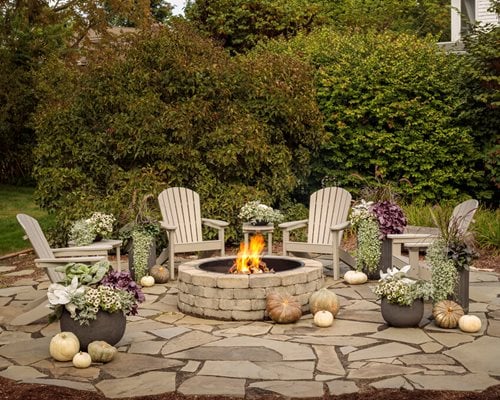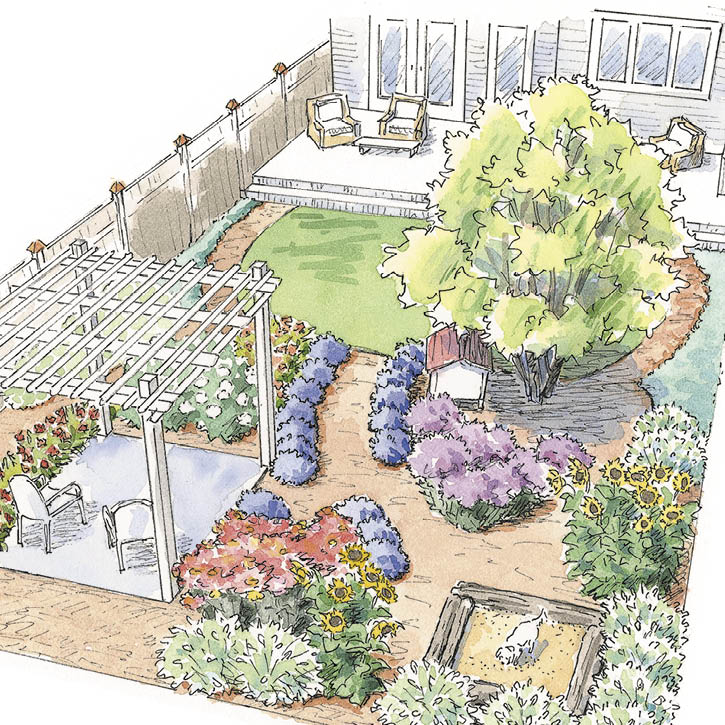Garten Design
Understanding the Fundamentals of Garten Design
Garten design is an art and a science that involves creating functional outdoor spaces that enhance the natural beauty of your home. This process requires a thoughtful approach to landscape architecture, where every plant, path, and feature is strategically placed. Good garden design should harmonize with the surroundings, make efficient use of space, and create areas for relaxation and enjoyment. Image selection plays a critical role in the process, as visual references can help convey the intended atmosphere and purpose of a garden. By considering elements like color, texture, and scale, you can effectively bring your garden vision to life.
The Importance of Garden Layout
The layout of your garden is paramount in achieving a successful design. An effective garden layout considers the placement of plants, hardscaping elements, and utilities. To do this, drawing up a detailed plan or blueprint can aid in visualizing the space. Experimenting with shaped plots, paths, and focal points is essential for creating a harmonious garden design. For instance, if you envision a colorful flower bed surrounded by gravel pathways, it should reflect balance and symmetry. A well-organized layout would ensure that each planted area complements others, keeping sightlines clear and enhancing the overall experience.

Choosing the Right Plants for Your Garden
Choosing the right plants is critical in any garden design. Factors like climate, soil type, and sunlight should guide your choices. For example, native plants often thrive better in their local environment, requiring less maintenance and water. Incorporating a mix of perennials and annuals lends year-round color and can be a sustainable approach, reducing the frequency of replanting. Furthermore, understanding the plants’ growth patterns is crucial—some plants may overpower others if not accounted for in the initial plan, so ensuring complementary growth is essential for a harmonious landscape.
Utilizing Hardscaping in Garten Design
Hardscaping refers to the non-plant elements in a garden, such as patios, pathways, walls, and fences. Each of these elements adds structure and function to the garden design. Incorporating hardscaping provides functional outdoor spaces for relaxation and recreation while defining specific areas of the garden. Materials like stone, wood, and concrete can create visual interest and texture. When selecting these materials, consider how they blend with the surrounding landscape and architecture. For example, a flagstone patio can seamlessly connect with natural elements, fostering a serene environment.
Creating Outdoor Living Areas
Outdoor living spaces have gained popularity in recent years for entertaining and enjoying nature. Designing an outdoor kitchen, dining area, or fire pit can extend your living space beyond the confines of home. When planning these areas, prioritize convenience and flow; for instance, having a grill nearby the dining area fosters a functional setup. Using weather-resistant furniture and decor can ensure your outdoor space remains inviting year-round. This design consideration elevates garten design by providing spots to gather with friends and family and enhancing the landscape’s overall usability.

Incorporating Water Features
Water features can transform a garden design by adding a soothing element that creates a peaceful focal point. Consider installing a pond, fountain, or waterfall to enhance the sensory experience of the space. These features attract wildlife, such as birds and frogs, and offer cooling effects on hot days. Selecting the right size and style depends on your garden’s scale and aesthetic. For instance, a large, formal fountain may suit a classic style, whereas a natural-looking pond can be incorporated into a more relaxed garden environment. Proper maintenance is crucial to ensure these features thrive and continue adding value to your landscape.
Maintenance and Growth in Garten Design
No garden design is complete without considering ongoing maintenance. While selecting low-maintenance plants can alleviate some efforts, factors like seasonal changes and pests require your attention. Developing a regular maintenance plan, including tasks like weeding, pruning, and checking for diseases, will ensure the design remains pristine. Regular maintenance allows plants to grow and flourish, sustaining the design over time. Additionally, considering the growth cycles of your plants will assist in more effective ongoing care and integration within the overall garden design.
Seasonal Considerations for Your Garden
Creating a garden that radiates beauty throughout the seasons requires foresight and planning. Consider choosing flowering plants that bloom at different times of the year to maintain interest. Incorporating trees that offer autumn foliage can add vibrant color when annuals fade. Winter interest is important too; cultivars with intriguing bark or evergreen plants can create striking visuals during the colder months. Planning for seasonal changes not only enhances aesthetics but contributes to maintaining a harmonious garden design that evolves along with nature.
Common Mistakes to Avoid in Garten Design
There are several common pitfalls in garden design that can deter successful outcomes. One notable mistake is overcrowding plants, leading to competition for resources. Adequate spacing is essential for plant health and growth. Another oversight is neglecting light conditions when selecting plants; assess sun and shade areas within your garden to ensure optimal plant placement. Lastly, failing to consider maintenance efforts during the design phase can result in overwhelming upkeep—planning for growth and care is vital for sustainability.
Key Takeaways
- Garden design balances form and function, harmonizing plants and hardscape elements.
- Incorporate a variety of plants suited for your climate to achieve vibrant landscapes.
- Design outdoor living areas that extend usable space for social and personal enjoyment.
- Implement seasonal considerations for year-round beauty in your garden.
- A solid maintenance plan is crucial for the longevity of your garden design.
FAQ
1. What is the first step in starting a garten design project?
The first step in any **garten design** project is assessing your space. Evaluate the purpose of your garden, existing features, and environmental conditions. Take note of sunlight patterns, soil quality, and any structures that may influence your design. This foundational knowledge is crucial for laying out your plan effectively.
2. How often should I maintain my garden?
Your garden maintenance schedule depends on the type of plants you have and their requirements. Typically, a routine check every week or two is advisable, though techniques may vary seasonally. More frequent maintenance may be necessary in spring, as gardens emerge from winter dormancy.
3. Can I design a garden on a budget?
Absolutely! Budgeting for a garden design involves prioritizing elements you want most. Consider starting with a foundational layout, using inexpensive hardscaping materials, and gradually incorporating plants. Many beautifully landscaped gardens have been created without high costs simply by making smart choices and being patient.
4. What’s the best way to integrate hardscaping into my garden design?
Integrating hardscaping effectively requires planning. Select materials that complement your home and existing landscape elements. Additionally, creating clear pathways between specific zones in your garden can enhance navigation and beautify your space. Consider factors like color and texture to ensure smooth transitions throughout the area.
5. How can I ensure my plants grow optimally?
To ensure optimal plant growth, address factors like sunlight, watering, soil health, and spacing. Choosing the appropriate plants for your climate and regularly checking them for pests will aid in healthier growth. Prioritizing regular maintenance and updates to your garden plan as plants mature will ensure sustained vibrancy.
6. What is the role of color in garden design?
Color in garden design plays a key role in evoking emotions and creating focal points. Strategically combining colors can lead to beautiful contrasts, enhance the aesthetic, and foster a certain atmosphere. Whether employing bold flower colors or softer foliage tones, understanding how to create an impactful color scheme will significantly enhance your garden design.
